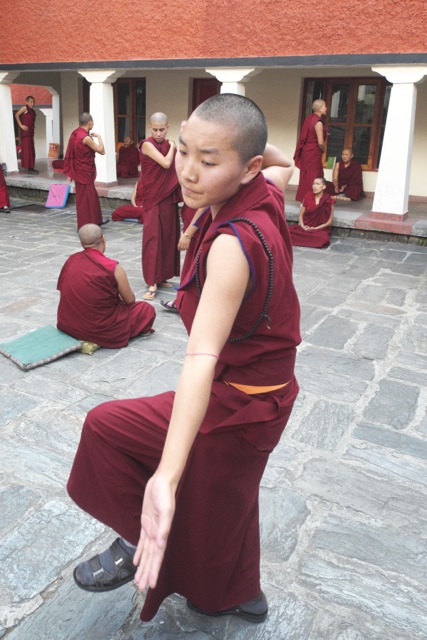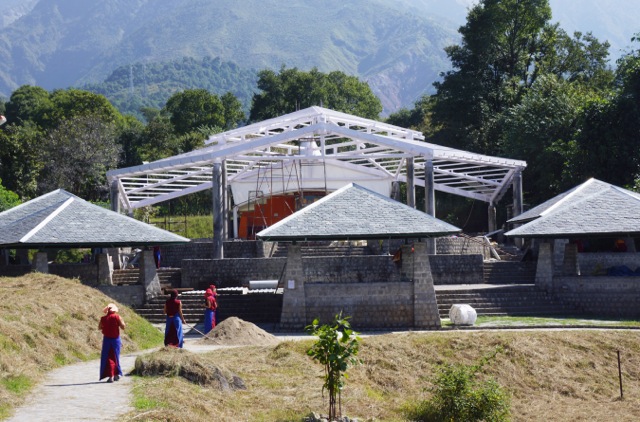One of the final construction projects at Dolma Ling Nunnery located near Dharamsala, India is the creation of a permanent roof for the debate courtyard.
Monastic debate is of critical importance in traditional Tibetan Buddhist learning. Through debate, the nuns test and consolidate their classroom learning with the motivation of ending suffering for all sentient beings.
Each year in October, the Tibetan Nuns Project supports a special debating event, called the Jang Gonchoe at which hundreds of nuns from nunneries throughout India and Nepal come together to practice this ancient form of learning. For many, this is an essential component of working towards the Geshema degree, equivalent to a PhD in Tibetan Buddhism.
To support this core learning activity, we need to build a large covered space where large numbers of nuns can congregate to debate.
The former soft-cover roof for the courtyard was destroyed in extreme weather and we are now seeking funds to create a permanent metal roof for the courtyard so that hundreds of nuns can debate, regardless of the weather and the season. The roof will protect the nuns from the hot Indian sun, the torrential monsoon rains and the other extreme weather in the region.
The building process for the roof is already underway thanks to the generosity of our supporters. The concrete columns and supporting pillars are complete. The Tibetan Nuns Project has taken a loan and is rushing the project ahead in order to have the roof in place in time for the Jang Gonchoe debating session which starts on October 4, 2013.
The total cost of the project is US $65,000.
Please help us finish the roof by contributing to our roof fund.
To donate you can:
- click here to donate online now
- call our office in Seattle at (206) 652-8901 any time from 10 am to 4 pm, PST weekdays
- mail a check to 815 Seattle Boulevard South #216, Seattle, WA 98134 USA
 Background:
Background:
The Tibetan Nuns Project was established over 2 decades ago to support a tremendous influx of nuns escaping from Tibet in search of religious and educational freedom. Ranging in age from early teens to mid-80s, they come from all parts of Tibet and from many different backgrounds. Many nuns suffered severely from their long, arduous and often dangerous escape to India. In most cases, the nuns have arrived without money or possessions to a community already struggling to support itself. These women wish nothing more than to live, study, practice, and teach in accordance with their spiritual beliefs.

